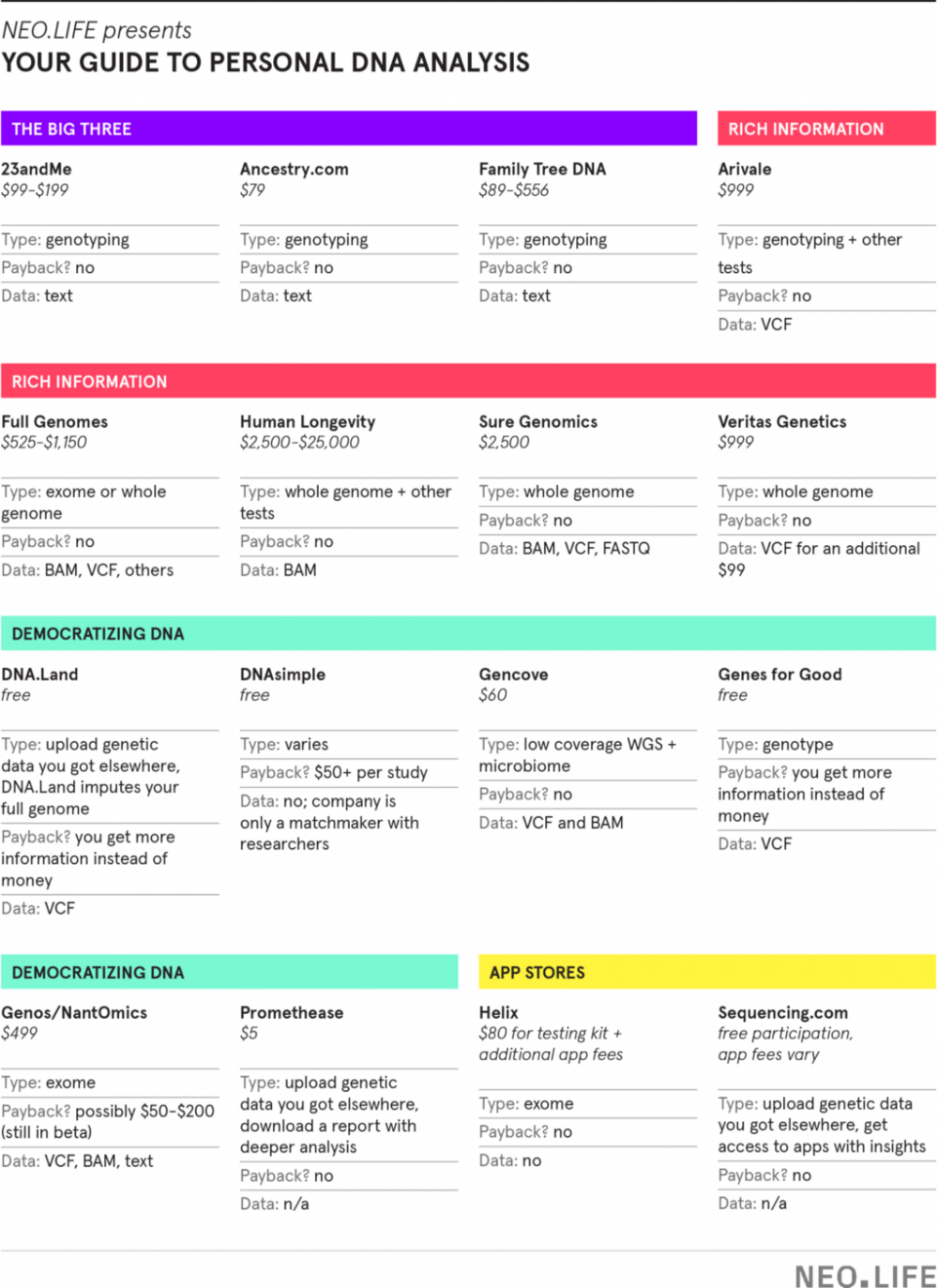A handy chart for sorting out many of the options in DNA analysis.
It’s now possible to get your entire genome sequenced for about $1,000, which is amazing. That’s a readout of six billion letters of your DNA, the As, Ts, Cs, and Gs that spell out who you are. But for less than $100 you can get DNA tests that provide an interesting snapshot. Which should you choose?
Our guide below is meant to help. It lists the offerings of 16 consumer-focused genetics companies and organizations, whether they’ll pay you back if your DNA is used by researchers, and the format of any genomic data they give you.

A quick explanation of the terms. Genotyping is the cheapest DNA service. Your genes are compared to a standard “reference genome” at something like 500,000 or one million different spots that tend to vary a lot between people. (These variations are known as SNPs, or single-nucleotide polymorphisms, tweaks of a single letter of DNA.) Genotyping can explain why you have various traits, shed light on your ancestry and reveal certain medical risks. Exome sequencing will find medical insights and many other things about you that genotyping does not. It decodes all the stretches of your DNA that are converted into functioning proteins — about 1.5 percent of your genome. Whole genome sequencing is the most thorough. In theory, it translates every single letter in your genome. In practice, some regions that are difficult to sequence get skipped, so sequencing is usually done 20 or even 50 or 100 times to catch errors. That’s known as 20x, 50x, or 100x “coverage.”
If you want your actual DNA readout and not just a counselor’s interpretation of it, you can get it in various formats. A sequencing machine produces a FASTQ file, with long strings of letters. You’ll probably want those fragments reassembled into a SAM (Sequence Alignment/Map) or BAM (Binary Alignment/Map) file, both of which could be useful for various DNA-analysis services. Providers might also send you a variant call format (VCF) file, a comparison of your DNA against a reference genome to highlight what’s unique. Or they could send a text file that lists hundreds of thousands of variations and their locations in the genome.
This chart was updated on October 19, 2017, to reflect the fact that Arivale is no longer offering a whole genome sequence.









